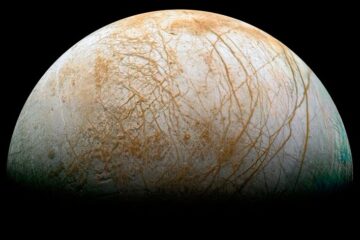NASA is preparing to launch its most ambitious planetary mission yet, targeting Jupiter’s icy moon Europa in a quest to explore one of the solar system’s most promising ocean worlds for signs of life. The Europa Clipper mission is set to take off on Monday from NASA’s Kennedy Space Center in Florida aboard a Falcon Heavy rocket. This spacecraft, the largest ever built by NASA for a planetary mission, spans the length of a basketball court—about 100 feet (30.5 meters) tip to tip when its solar arrays are fully extended.
Europa Clipper’s journey will be far from direct, covering a staggering 1.8 billion miles (2.9 billion kilometers). The spacecraft will loop around both Mars and Earth, using gravity assists from these planets to build up speed. The launch is scheduled for October 14, 2024, at 12:06 p.m. EDT (9:36 p.m. IST), with NASA having two potential launch windows until November 6. Timing is critical, as each day offers only one precise opportunity for the launch. A planned launch earlier in October was delayed due to Hurricane Milton, but NASA remains on track for this new date.
This $5 billion mission’s primary goal is to explore the possibility of life beneath Europa’s icy surface. Scientists believe that Europa harbors a vast subsurface ocean with more water than all of Earth’s oceans combined. The mission is being developed by NASA’s Jet Propulsion Laboratory, with management led by Caltech in Pasadena, California, in collaboration with the Johns Hopkins Applied Physics Laboratory.
Once launched, Europa Clipper will join two other spacecraft currently orbiting Jupiter: NASA’s Juno, which has been studying the planet since 2016, and the European Space Agency’s JUpiter ICy moons Explorer (JUICE), launched in April 2023. Thanks to differing routes, Europa Clipper is expected to arrive at Jupiter by April 2030, a year ahead of JUICE.
Equipped with nine advanced scientific instruments, the Europa Clipper will conduct 49 flybys of Europa, coming as close as 16 miles above the moon’s surface. Its tools, including high-resolution cameras, magnetometers, and ice-penetrating radar, will analyze Europa’s icy shell and the underlying ocean, seeking clues about the moon’s potential to support life. During these flybys, the spacecraft will scan almost the entire moon while minimizing exposure to Jupiter’s powerful radiation belts.
Although the mission faced a brief setback due to Hurricane Milton, NASA officials have confirmed that the damage at the launch site was manageable, allowing preparations to continue. This mission is a significant step toward understanding the possibility of life beyond Earth and will pave the way for future explorations of ocean worlds within our solar system.


